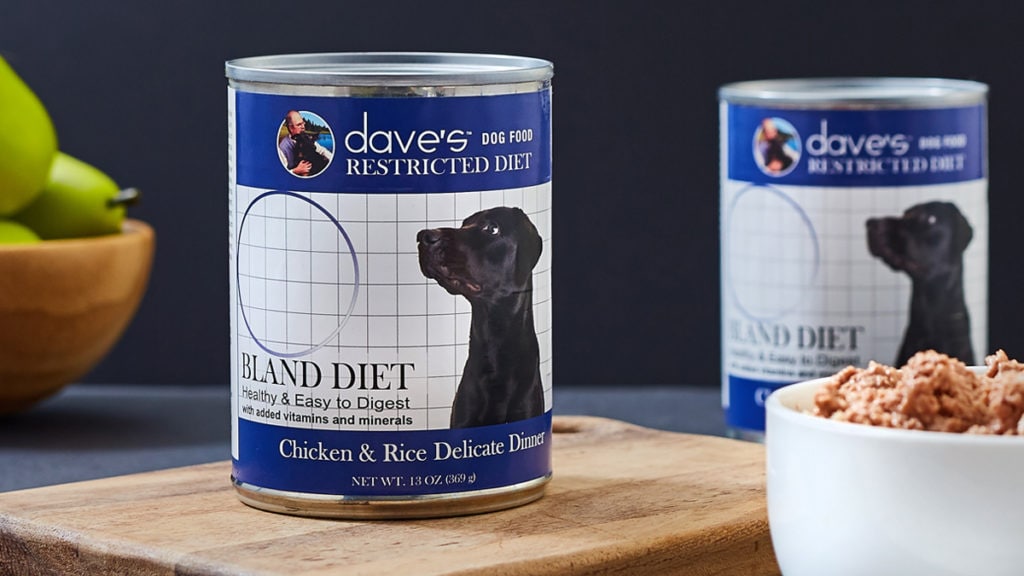It’s heartbreaking—and messy!—to tend to a dog with upset stomach symptoms. A sick dog can quickly become dehydrated and malnourished, so it’s important to do everything you can to stop acute symptoms such as vomiting and diarrhea.
As in humans, there are a range of underlying triggers for dog illnesses such as vomiting and diarrhea. Vomiting typically indicates an infection or irritation in the stomach and upper small intestine, while diarrhea indicates the problem is focused in the intestinal tract. A bland diet, which provides nourishment and hydration while calming the digestive tract, is an important part of the healing process.
Bland With a Purpose
“Chicken is the most digestible of meat proteins there is, so a diet of just chicken and rice is so easy to digest. There’s nothing in it to aggravate the digestive tract,” says Dave Rater, owner of Dave’s Pet Food. “It’s also a great diet for senior dogs. Anything you can do to make the system work not as hard is great for [older] dogs.”
Bland diets for dogs are also low in fiber, which causes stool production to slow. This helps reset the digestive symptom and reduces diarrhea.
How to Go Bland
If you have a sick dog, it’s always a good idea to take him to the veterinarian to rule out any major medical problems, such as dog allergies, or other serious dog illnesses. If it’s simply a case of upset stomach, your veterinarian may advise that you swap out your pup’s favorite kibble for a bland diet.
Prior to feeding your dog a bland diet, it’s wise to not feed him anything for 12 to 24 hours. Young dogs should not fast for longer than 12 hours. Fasting is an especially good idea if you suspect your dog is still actively sick. At this stage, any food you give him may immediately be vomited up or defecated out. Either way, you’re risking further dehydration. Taking some time off food allows his digestive tract to reset.
During this fasting period, be sure to give your dog plenty of fluids. You may want to spoon-feed your dog water or put ice in his bowl to entice him to drink.
After the fasting period, introduce bland food. Quantity is important—you don’t want to overload your dog’s stomach and intestines. Test a small amount to see how your dog reacts. For example, a small dog may initially be able to keep down a tablespoon or two of bland food at a time. Eventually, you may be able to work up to larger portions, but your dog’s portions will likely be smaller than normal while he recovers.
Dave’s Pet Food Restricted Diet Chicken & Rice Delicate Dinner Canned Dog Food contains a bland mix of chicken and rice and is designed to calm your dog’s stomach during times of transition or illness. With no wheat, beef, corn, soy, dairy, and artificial colors or flavors, this moist canned food is wholesome, and easy-to-digest. “You should have a couple cans in the medicine cabinet, just in case,” says Rater. Many dogs have food sensitivities, so options like this are great for dog allergies.
Returning to a Regular Diet
Continue the bland diet for several days until the dog’s stools return to normal and vomiting ceases completely. During the bland diet period, be sure that your dog doesn’t receive any treats or sneak other types of human food, as this may irritate his stomach again.
When your dog is ready to be reintroduced to his normal food, transition him slowly. Start by adding one part regular dog food to two parts bland food for several days. If his stools stay firm, you can slowly increase the portion of regular dog food to bland food until the diet is completely transitioned.
Share:









